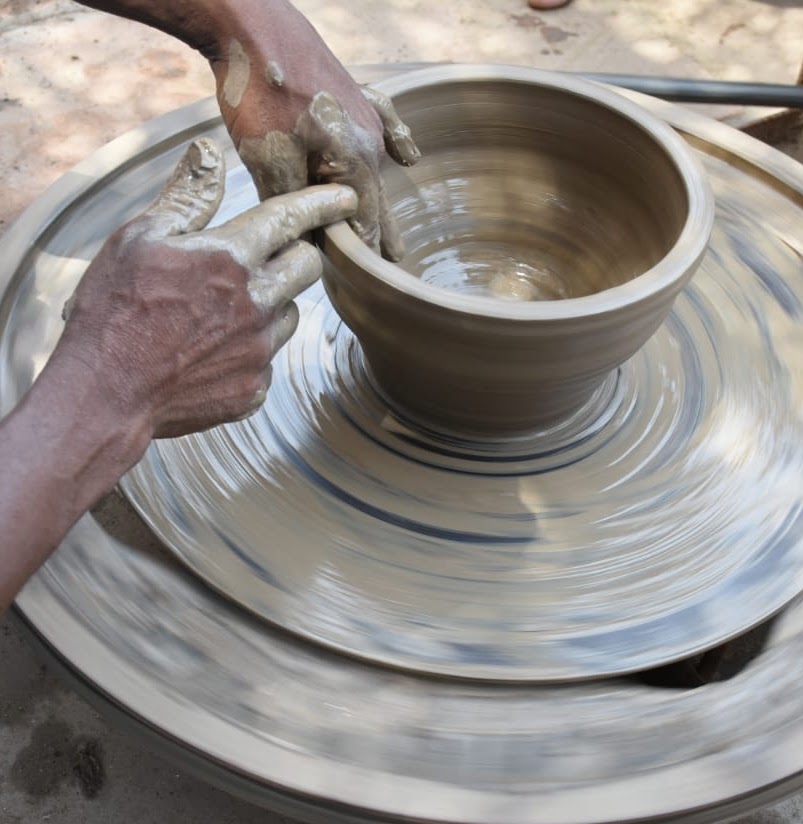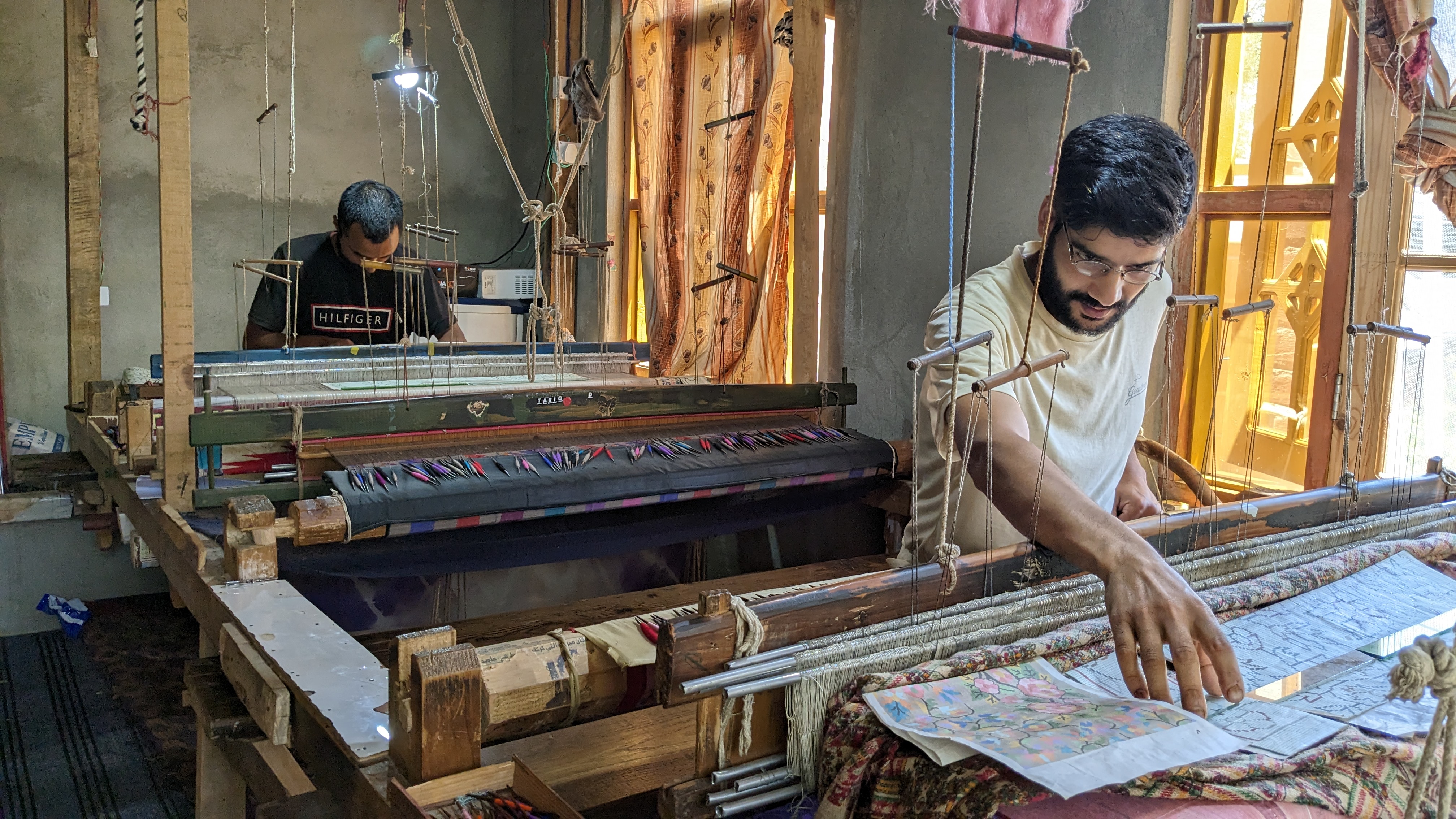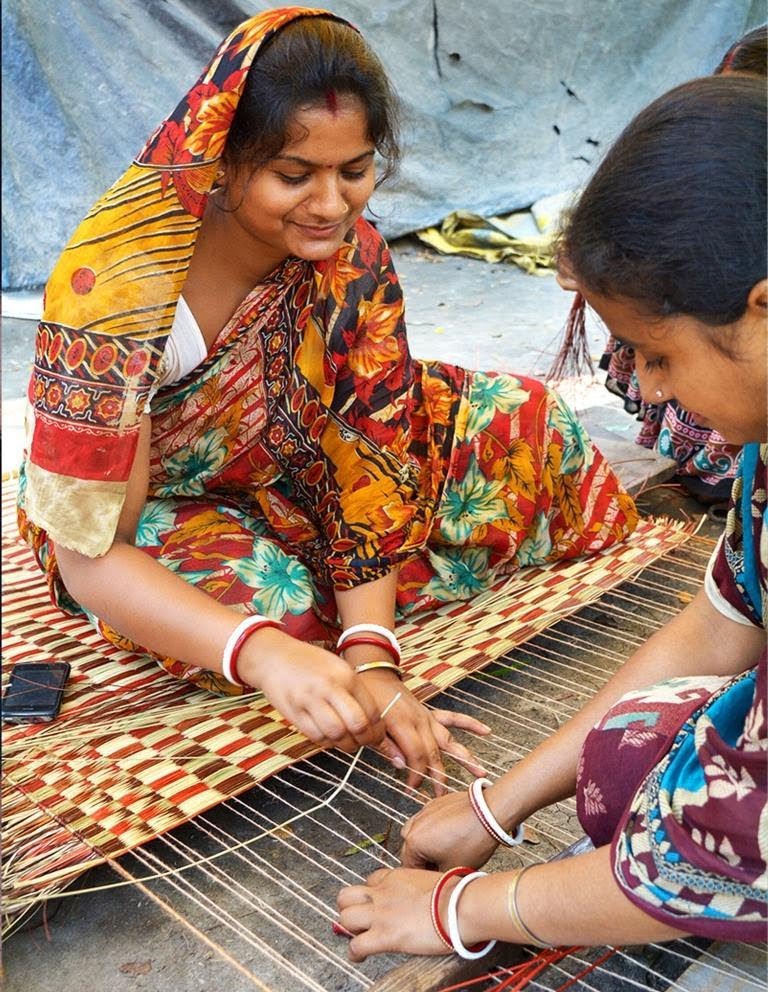Principles of Sustainability within the Traditional Creative Industries of India

Madhura Dutta revisits the rich traditional creative industry of India, highlighting its significance to the country's lifestyle, culture, faith and societies. From pottery to textiles and various handicrafts and handloom, find out how India's traditional creative economy, rooted in local natural resources and shaped by community-based knowledge, embody the principles of sustainability and are driving cultural preservation and economic growth today.
This article is commissioned as part of culture360.ASEF.org's Going beyond 'green' open call. Through a series of articles and podcasts, we look at various endeavours, insights and trends that broaden the discourse of sustainability beyond the environmental aspect within the arts and culture sector.
Creativity and art have been integral to human existence since time immemorial, evidenced by ancient cave paintings to pottery, weaving, metal craft, frescoes, fine arts, sculpting, and much more. Today, we are witnessing unprecedented creative possibilities through technology and AI. In fact the Creative Economy, encompassing all aspects of the arts and culture sectors, involving and employing diverse actors, is one of the most dynamic economic sectors of the modern age. It is also the most distinctive in terms of cultural, human, and natural resources, giving every country the opportunity to position itself uniquely.
Creative Industries of India
India has a rich creative industry; its cinema, fine arts, classical music and dance, literature, and multidisciplinary art are all well known. But it also has an enormous wealth of lesser-known and more informal traditional, rural artform-based local industries. This time-tested traditional creative economy, specifically creative manufacturing, has lasted for more than five thousand years and is still one of the largest livelihood generating sectors in the country. From the 2nd century BCE to the middle of the 15th century CE these creative industries flourished, and India was a pioneer in the vibrant international trade and commerce in the ancient world. During this period, India was well known not only for its natural products but also its luxury products, particularly its spices, semi-precious stones, textiles, shawls, carpets, metal crafts, ceramics, natural dyes, and various artworks.
This traditional creative economy has been integral to the country’s native lifestyles, culture, faith, and societies, which in turn are built on the core components of sustainability. The concept of sustainability is in fact a cross-cutting value across Asian cultures, both in their spiritual and material aspects, centred around respect and gratitude for natural resources. These societies are traditionally frugal, characterised by recycling and reuse, prudent use of resources, and simple but scientific hand technology for shaping utilities and art. The key features of these traditional industries that have contributed to their continuity include family or community-based practices, dependence on local natural resources, exclusive community knowledge and hand-skills, inspired by regional social and cultural histories, driven by lifestyle needs, utilities, and customs, and sustained by the tradition of skill and knowledge transmission through generations. The knowledge and creativity in using hand skills and techniques of processing local natural materials for building houses, making clothes, cooking, crafting utilities, creating art, application of natural medicines, etc., are only a few examples of the intersection of art, environment, and sustainability in people’s daily lives. India’s traditional handicrafts and handloom sectors have always had the attributes of a ‘green economy’, with their characteristics of being local, indigenous, culturally rooted, low energy, enduring, and socially and economically enabling for the maker communities.
While these creative occupations originally developed to fulfil basic needs, they evolved with active patronage and offered diverse products or services for local, regional, and international trade. For instance, every part of the sub-continent has had its unique handloom traditions with their own specialities. In the past, weavers weaved textiles with cotton and wool for the agricultural or pastoral communities who provided the raw materials in exchange for clothing and fabrics. At the same time, high end handwoven fabrics of fine cotton and silk found their way to international markets. The communities from regions rich in natural fibre turned them into mats and floor coverings for daily or luxury use. Basketry, the most universal creative skill of the world, is found in all shapes and forms with design elements establishing unique cultural identities of the makers. Quilting and embroidery were skills found in every household. Pottery, metal craft, jewellery were some of the oldest industries that created a mark in the the international markets.

1. The ancient craft of Pottery © Madhura Dutta
Traditional Creative Industries in the Modern Era
This ancient glory, however, is long lost. Under colonial rule, India’s traditional creative economy was systematically decimated to ease the path of the Industrial Revolution. During industrialisation, the once self-sufficient creative communities of India mostly turned into wage labourers and suppliers of raw materials for urban enterprises. Changing lifestyles and socio-economic structures led to dwindling local markets, reduced patronage and increased access to factory-made products. With time, hand skills and rural creative industries were devalued and became insignificant. The traditional producers, used to certain home-based, family-based ways of working, found it challenging to respond to fast-changing modern markets. They became marginalised and were pushed to the periphery of the mainstream economy. Globalisation accelerated this shift by introducing Western trends of fast fashion, use-and-throw culture, and standardisation of products for mass markets. The internet brought further cultural homogenisation. While traditional knowledge and skills remained with the older generations, the newer generations readily adopted a more western and global culture.
Even so, India remained a region rich in uniquely diverse raw materials, exceptional creative skills, unparalleled traditional ecological and cultural knowledge, and cohesive communities practicing traditional creative occupations for generations. Post-independence, the government and the private sector realised the potential of these traditional creative economies to generate sustainable livelihoods and establish a strong and unique global creative industry. The active private sector and civil societies became strong advocates of this handmade creative industry and collaborated for supportive policies and programmes aligned towards protection and sustainability of the arts and crafts, marketing, design innovations, capacity building, exports, and entrepreneurship support for maker communities. More recently, the use of digital technology has become an effective way of promoting, branding, and strengthening outreach to new consumers. Revitalisation of Indian handicrafts continues generating new demand and contexts for traditional creative products. Although the sector remains fraught with several challenges owing to its sheer scale and diversity, it has come a long way in acquiring a strong position in the global market for fashion and lifestyles. To counter the challenges of cultural homogenisation, the critical issue of promoting unique cultural identities of the maker communities is being addressed through awareness generation about the uniqueness of the creative traditions and practices, hand-crafting processes, and the collective pride and emotional connect of the actual producer communities to their creative occupations. Heritage-sensitive, responsible and ethical branding is also being applied increasingly to strengthen the value of these industries.

2. Kani Shawl Weavers of Kashmir weaving luxury products © Madhura Dutta
Future of the Rural Creative Economy
The COVID-19 pandemic has changed the earlier paradigm of economic growth and has shifted the lens of development towards more local, self-sufficient, self-reliant and human creativity-based occupations that have proved to be more resilient and quicker in recovering the economic shock. Sustainable development is being characterised today by a ‘better and more satisfactory life’, contributing to community well-being, resilience, collective good, and strong cultural identity. In the post-pandemic world, the appreciation of traditional creative industries has increased significantly and there is a focus on boosting local economies for sustainable development, owing to their dependence on local resources and capabilities.
India’s immense cultural and geographical diversity, primarily rural population comprising thousands of localised creative communities, rich history of ancient civilisations and cultures, experiences of wide cultural diffusions, and shared heritage with bordering countries, provides for a unique and high-potential ecosystem for a thriving rural creative economy.

3. Women creative entrepreneurs of West Bengal working with local natural fibre craft © Banglanatak dot com
About the Author
Madhura Dhutta is a development sector professional working in the area of culture and development for more than two decades. She is also a freelance writer.
